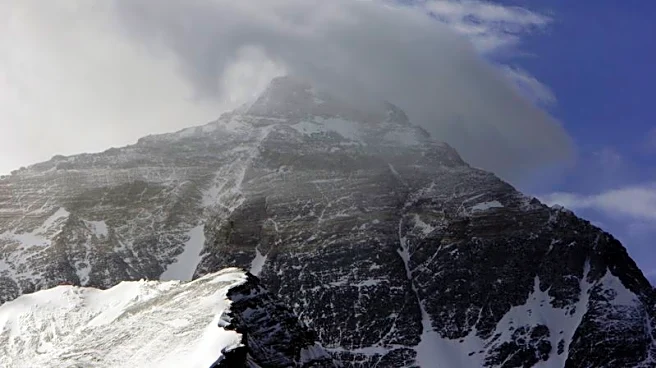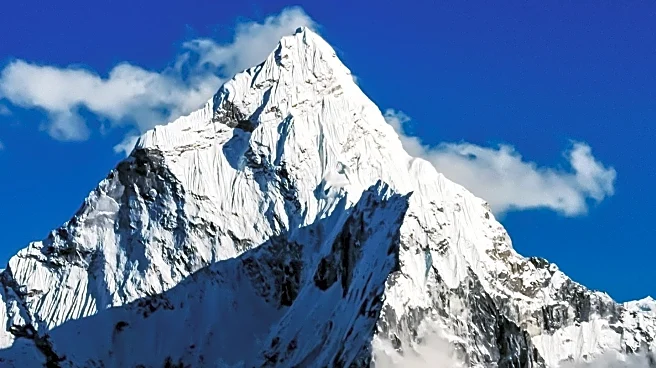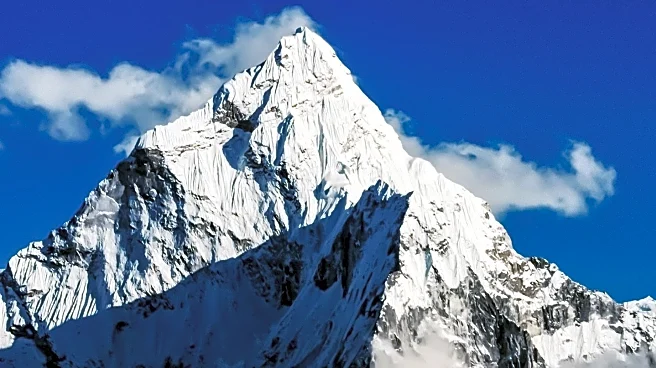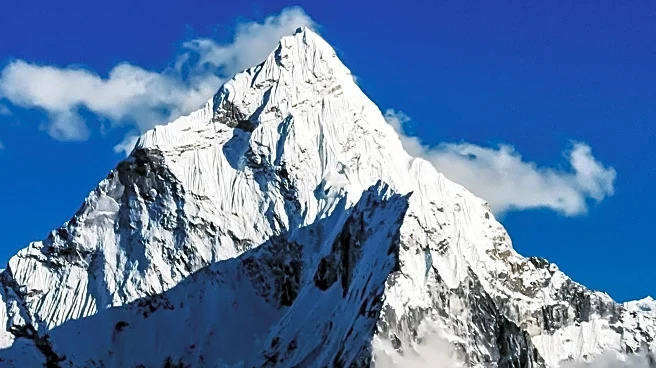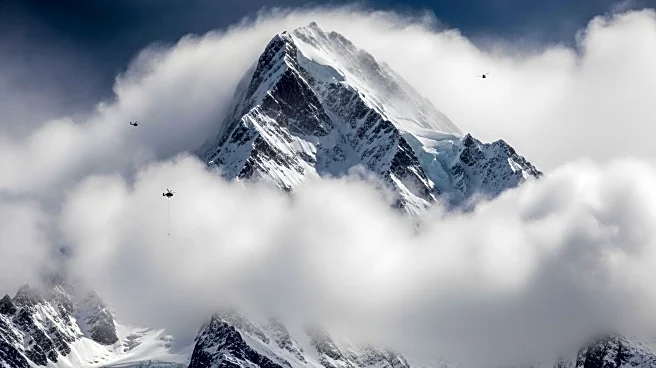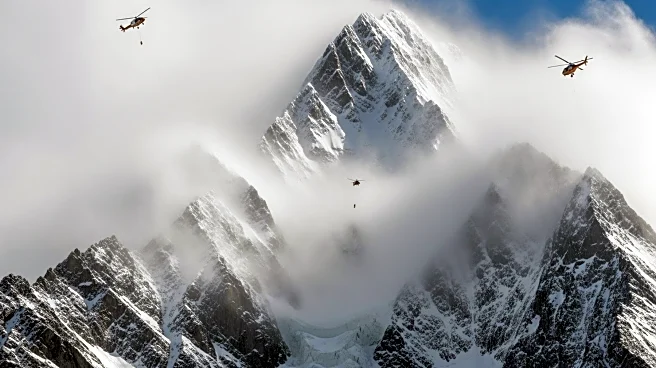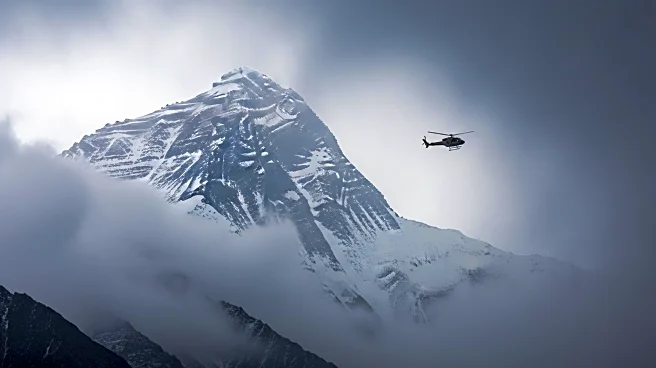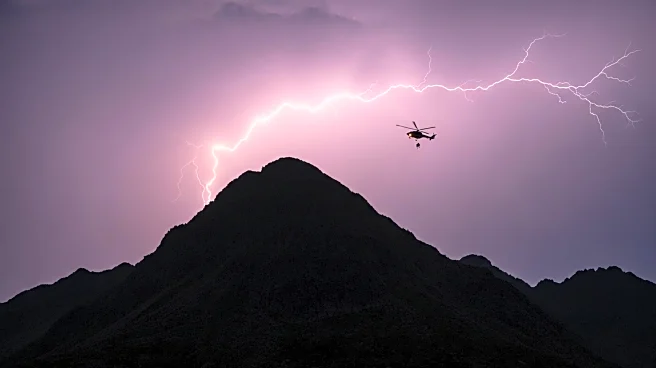What's Happening?
Hundreds of trekkers near the eastern face of Mount Everest in Tibet have been rescued after being stranded due to a blizzard and unusually heavy snow and rainfall. Chinese state media reported that as of Sunday, 350 trekkers had reached the township of Qudang, with contact established with over 200 others. The adverse weather conditions, including snow, thunder, and lightning, began on Friday evening, affecting the remote valley of Karma, which leads to the eastern Kangshung face of Everest. The area, at an elevation of 4,200 meters, saw hundreds of visitors during China's National Day holiday. Local villagers and rescue teams have been deployed to clear snow and assist nearly 1,000 trapped individuals. The north face of Everest, a popular tourist destination due to its accessibility, was also affected, leading to the suspension of ticket sales and entry to the Everest Scenic Area.
Why It's Important?
The rescue operation highlights the impact of unexpected weather patterns on tourism and safety in high-altitude regions. The heavy precipitation in the Himalayas poses risks to trekkers and local communities, emphasizing the need for improved weather forecasting and emergency preparedness. The situation also affects the tourism industry, as the suspension of activities in the Everest Scenic Area could lead to economic losses for local businesses reliant on tourist influx during peak seasons. Additionally, the adverse weather conditions in Nepal, resulting in landslides and flash floods, have caused significant casualties and infrastructure damage, further stressing the importance of disaster management strategies in vulnerable regions.
What's Next?
Rescue operations are ongoing, with trekkers expected to arrive in Qudang in stages under the guidance of local rescuers. Authorities may review and enhance safety protocols for trekking activities in the region, considering the unusual weather patterns. The tourism industry might face challenges in recovering from the temporary suspension of activities, prompting stakeholders to explore alternative strategies to mitigate economic impacts. In Nepal, efforts to restore infrastructure and provide aid to affected communities will be crucial in the aftermath of the landslides and floods.
Beyond the Headlines
The unusual weather conditions in the Himalayas could be indicative of broader climate change impacts, necessitating further research into changing weather patterns and their effects on high-altitude environments. The event underscores the importance of international cooperation in addressing climate-related challenges, as regions like Tibet and Nepal face increasing risks from extreme weather events. The cultural and economic significance of Mount Everest as a global tourist destination may drive efforts to enhance resilience and sustainability in tourism practices.

